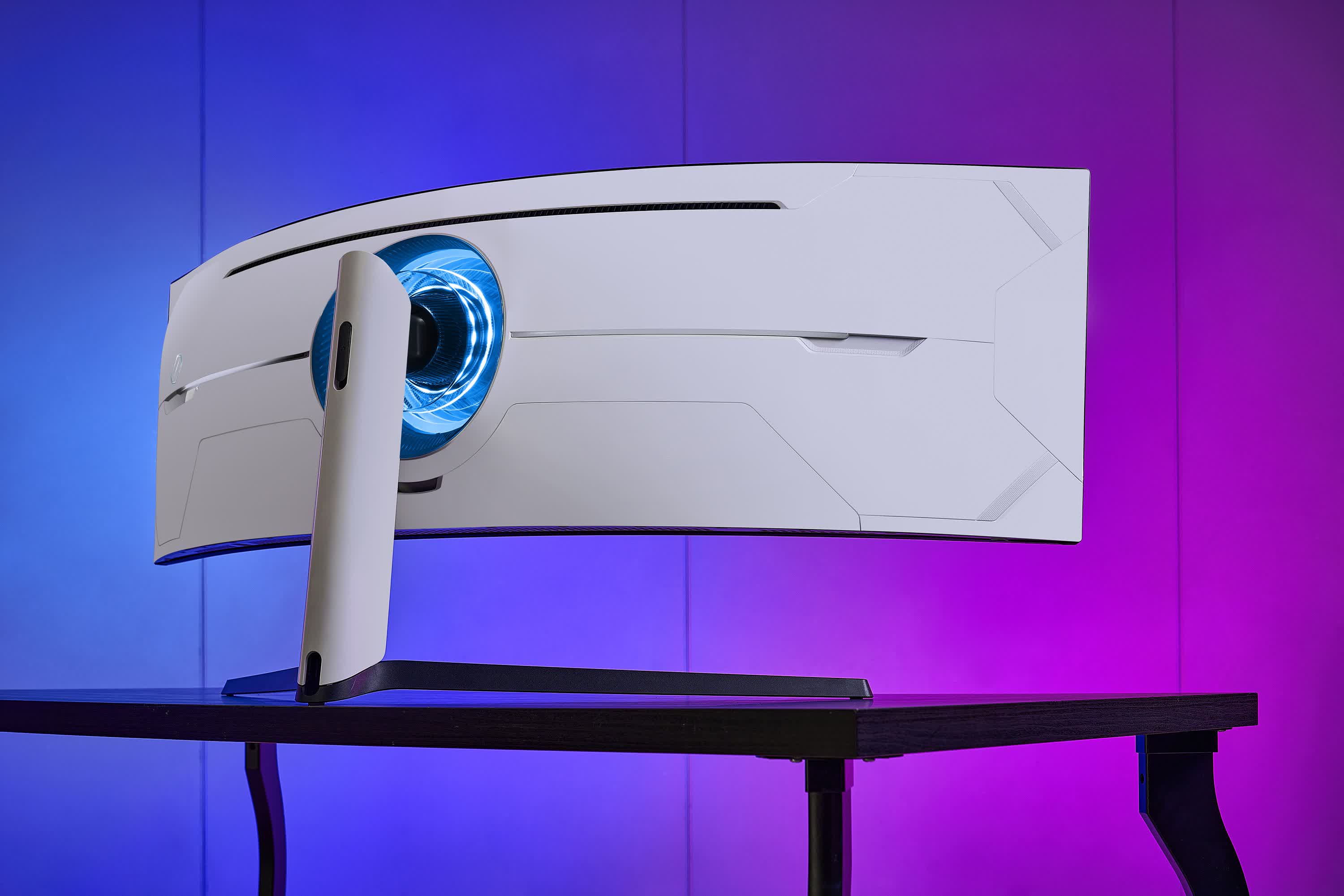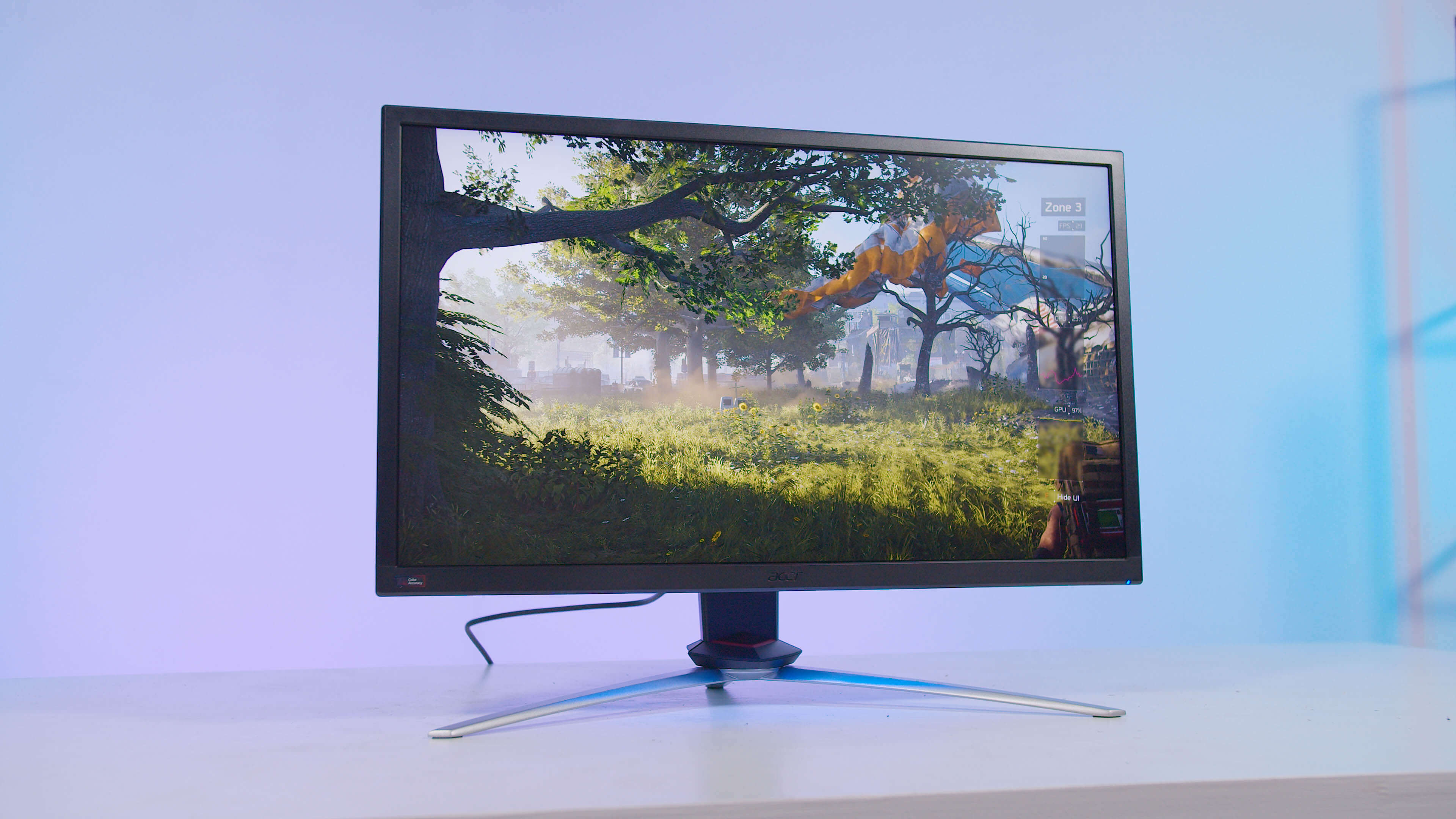See our latest update to this buying guide: The Best PC Monitors
Not only are PCs increasingly more powerful, but they're also becoming more popular – one of the many effects of the pandemic. In our latest update to TechSpot's Best Monitors guide, we've included several new 4K displays at various price points.
There are top-level options for professionals, enthusiast products that are great for both work and play, monitors designed purely for gaming, and some noteworthy budget options that come with features once found only on expensive flagships.
Also see:
Best for Productivity and Work
Dell UltraSharp U3219Q 32"

Great | Differentiating Features
Factory calibrated colors and accuracy are fantastic. Built-in KVM. Pro features for a non-pro price.
Good | Most Have It
Tiny bezels, USB type-C, multiple HDR profiles.
Average | Competitors May Be Better
No speakers.
For an all-round great monitor, it's generally accepted that a combination of a 32-inch size and 4K resolution hits the sweet spot. While that leaves plenty of options, few offer the same mix of pro features, color accuracy, build quality, and price as the Dell Ultrasharp U3219Q.
Dell's experience in producing high-end displays is obvious in the Ultrasharp U3219Q. The 3840 x 2160 IPS panel has been color calibrated at the factory to produce 99% sRGB color accuracy out of the box, as well as 95% DCI-P3 and 99% Rec. 709 color. The screen boasts 1.07 billion colors and a 1300:1 contrast ratio, while the 400 nits of brightness help it to HDR 400 certification. You even get four HDR profiles for different uses: Desktop, Movie, Game, and Reference – all of which make it ideal for professionals, content creators, photo editing, and multitasking.
Ports consist of a single DisplayPort 1.4, four USB 3.0 slots, a single HDMI 2.0, and a USB Type-C that offers Power Delivery, DisplayPort 1.4 connectivity, and USB 2.0 data connectivity. The USB-C slot also features up to 90 watts of charging power, which is great for juicing compatible high-end laptops.
Other highlights include a built-in KVM that lets you connect and switch between two PCs while using one keyboard and mouse. It also comes with tiny bezels (6mm), has a low response time, and the minimalistic chassis is solid.
If you're after amazing image quality in a large, 4K monitor that's great for work and entertainment, the Dell Ultrasharp U3219Q is a perfect fit. As of writing, it's been reduced from its regular price of $1,049 to under $800 and comes with a three-year warranty and Premium Panel Guarantee.
Money-is-no-object alternatives
Professionals who work with visual media need a monitor that offers unparalleled visuals and precise color accuracy. These are reserved for a handful of pro-level, very expensive monitors, but you get what you pay for.
In a category of its own with price tags starting at around $5,000, we have identified three key contenders. Dell's new UltraSharp UP3221Q is the first 31.5-inch display to feature Mini LED-based full-area local dimming (FALD) backlighting with 2,048 zones, allowing high brightness and excellent contrast. The 1,000 cd/m2 peak HDR brightness means it's VESA DisplayHDR 1000 certified, and it supports 99.8% of the DCI-P3 color space, 83% of the BT2020 color gamut as well as 93% of the Adobe RGB color space.
There are plenty of other pro-level features here: an integrated Calman Powered colorimeter, a picture-by-picture mode that can show outputs from two separate sources simultaneously, each with their own color space setup; and connectivity that includes DisplayPort 1.4, two HDMI 2.0, two Thunderbolt 3, and two USB 3.1 ports.
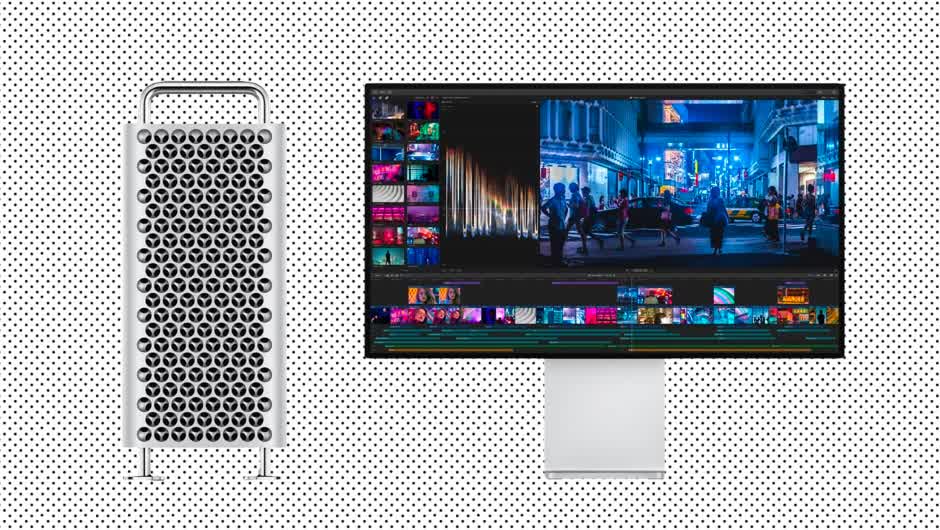
Dell's UP3221Q will cost $4,999 when it arrives on November 5. That's still cheaper than last year's winner, though - the still great Eizo ColorEdge CG319X, which is priced around $5,700.
The alternative, and likely the preferred choice for Apple users, is the Pro Display XDR. It comes with a higher resolution 6K resolution (6016 x 3384) instead of 4K, and the peak brightness hits 1,600 nits, but the 576 dimming zones are a step down from the PremierColor's 2,048. Color accuracy is amazing as expected. Be prepared to add $1,000 if you want Apple's stand, $199 for a VESA mount adapter, and another $1,000 for the optional "nano-texture glass."
Best Enthusiast Monitor
Samsung Odyssey G9 49" Curved
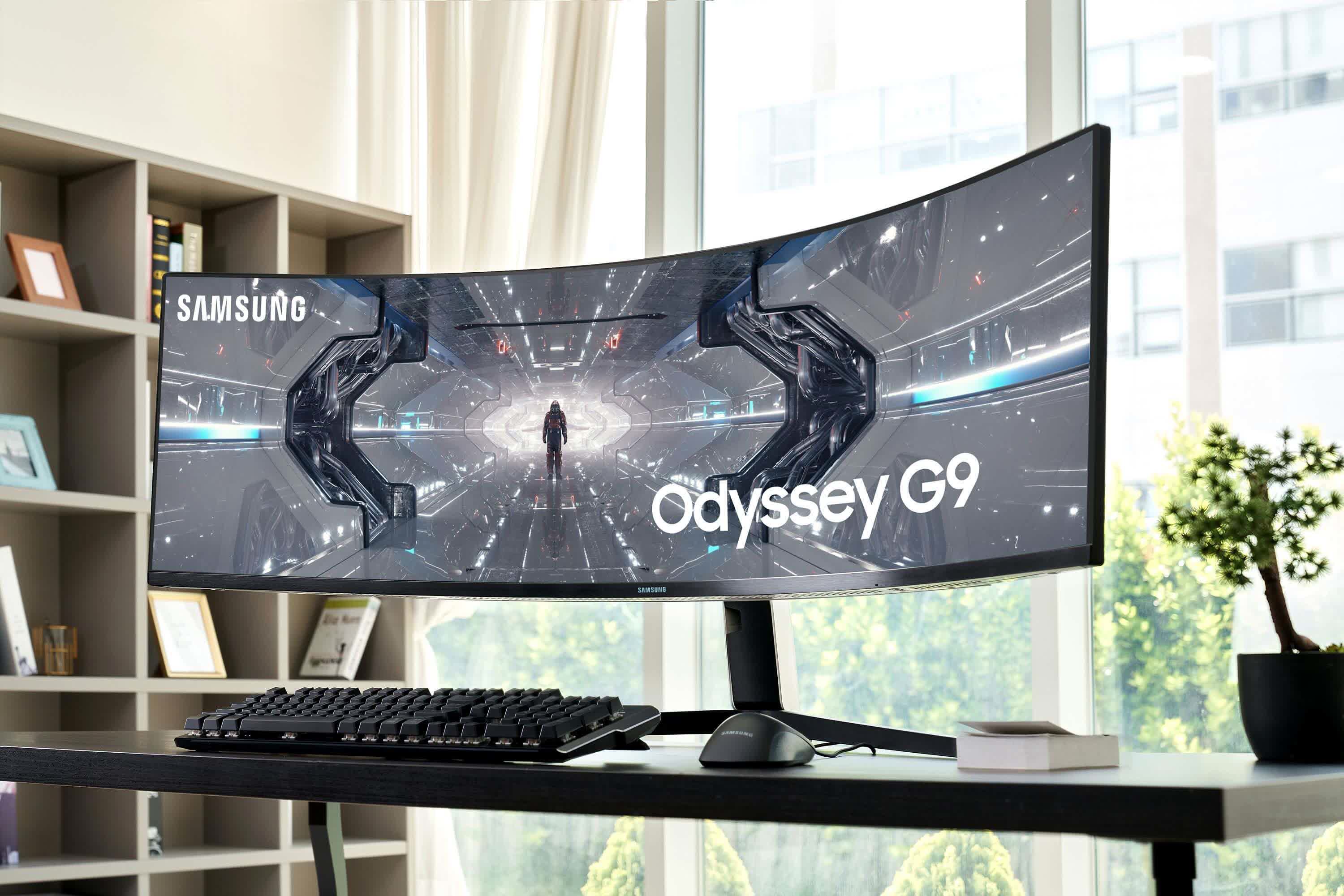
Great | Differentiating Features
49-inches at 240Hz, great HDR
Good | Most Have It
AMD Freesync Premium Pro and Nvidia G-Sync support
Average | Competitors May Be Better
Some might find it overwhelmingly large and pricey. Extra ports would have been nice. Might be too curvy
The Odyssey G9 is super-ultrawide 49-inch (5120 x 1440) monitor with a 32:9 aspect ratio: the equivalent of two 27-inch 1440p displays next to each other without the annoying bezel in the middle. This makes it a brilliant choice for productivity tasks where having two full screens side-by-side can be a godsend.
Our pick from last year in this section, the UltraSharp U4919DW, remains an amazing monitor, but it's been edged out by the Samsung Odyssey G9. The Odyssey differentiates itself from the Ultrasharp in a few areas. Samsung's product has a much more aggressive, 1000R curve that is meant to immerse you in whatever's on the screen, though it's likely to be a divisive feature. It also covers 99.7% of the sRGB color gamut, 97% of the DCI-P3 space, and has great HDR performance. But the most notable improvement over its rival are the Odyssey's gaming-focused specs.
With an amazing 240Hz, 10-bit VA panel with a 1ms response time, the Odyssey is just as good at running Doom Eternal as it is displaying multiple spreadsheets – providing you've got a graphics card powerful enough to handle all those pixels. It also has AMD FreeSync Premium Pro and is G-Sync compatible, giving you buttery-smooth on-screen action.
Ports consist of two DisplayPort 1.4 inputs, one HDMI 2.0, and two USB 3.0 ports, which should be adequate for most users. With so many features, the Odyssey G9 isn't cheap at just under $1,500. You'll also need a very big and sturdy desk for it to sit on. But few monitors can match this display when it comes to work, entertainment, and gaming.
A standard-size alternative that's great for gaming
Acer Nitro XV273K 4K / 144 Hz 27"
For enthusiasts with PCs that cost more than most used cars, a combination of 4K resolution and a high refresh rate is a viable option. Until recently this meant spending $2,000 on an Acer Predator X27 or ROG Swift PG278Q, but there are now plenty of cheaper alternatives, including the Viotek GFI27QXA and Acer XB273K. We like the Acer Nitro XV273K as it's great for both work and play, and it's available for $899.
The 27-inch monitor is FreeSync rather than G-Sync, though that hardly matters since Nvidia started supporting its rival's adaptive sync tech. It also boasts excellent build quality, accurate DCI-P3 color gamut, and many of the features found in more expensive alternatives. The only real drawbacks are the lower-end DisplayHDR 400 certification and lack of full array local dimming backlight, meaning you don't get a true HDR experience. If you want super-smooth 4K at under a grand this is an excellent choice.
Best Gaming Monitor
Samsung Odyssey G7
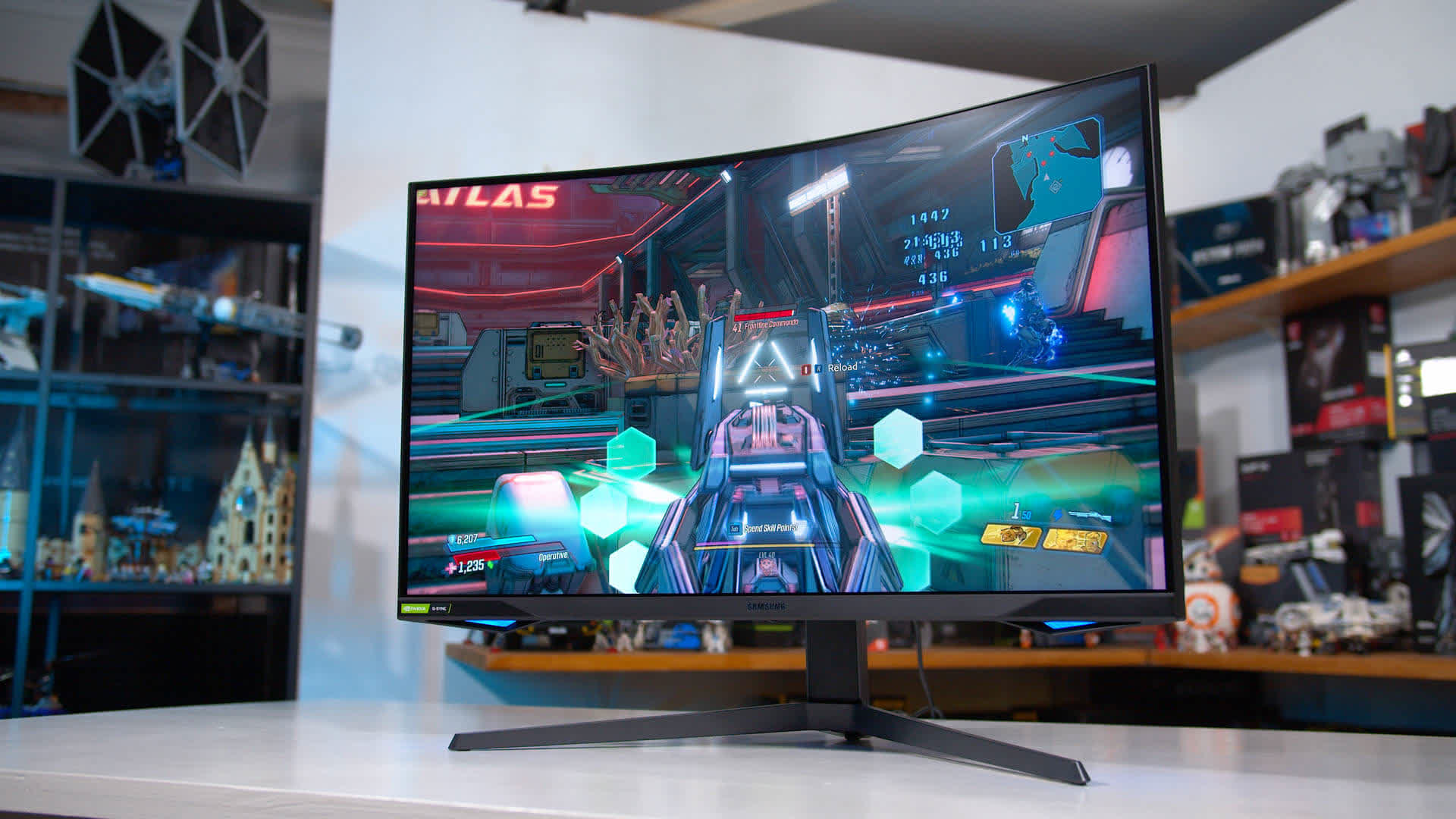
If you want the best of the best at 1440p, you should be aiming for a 240Hz gaming monitor instead. A good number of products have been released in the last 18 months and they should all offer great longevity and future proofing. Granted, they're more expensive than medium refresh rate options above, starting at around $650 for worthy options.
The Samsung Odyssey G7 in its 27-inch variant for $700 (discounted to $499 as of writing), has the fastest response times we've ever tested on a 1440p monitor, which combined with its 240Hz refresh rate and variable overdrive leads to excellent motion clarity - not just at 240Hz, but across the entire refresh range. Then, because it's a VA panel, it also has great black levels and a high contrast ratio, making it well suited for gaming in a dark environment. Color quality is generally impressive as a result, including a decent wide gamut.
The main downside to the Odyssey G7 is its aggressive 1000R curve, which is a divisive feature, you tend to either love or hate it, and I'm more in the hate it camp. The curve limits its versatility - the Odyssey G7 is really only well suited for gaming; content creation and productivity suffers from curve-related distortion, the wide color gamut isn't as wide as other options, and uniformity can be mixed.
How about IPS high refresh options?

If those downsides sound annoying to you, choosing an IPS panel instead might be the way to go. It will be more versatile and perform very well. We've been recommending the Asus ROG Strix PG279QM for a while, which is a truly excellent monitor with class-leading IPS performance and outstanding factory calibration. However, at $900 we do feel it's a bit expensive when a similar alternative, the Acer XB273UGX exists at just $650. We haven't tested this Acer monitor yet, but it appears to use the same panel and performance by all reports is still excellent. So that's one to consider for sure.
Editor's note: We have a dedicated buying guide for the Best Gaming Monitors where we detail more options for 1440p and 4K gaming at different price segments, discuss esports, ultrawide gaming and budget options.
Over the past year, 1440p 240Hz monitors have come into their own with many options available. We don't just have TN options anymore. Samsung's Odyssey G7 gives us an excellent experience using a VA panel, while there are many new IPS options that also offer great gaming performance in this new high refresh rate category.
For pure gamers, the Samsung Odyssey G7 is an extremely compelling option. Samsung's latest generation VA panels are mighty impressive, with class leading response time numbers. This display's peak performance at 240Hz is 22% faster than any IPS alternative we've tested, and thanks to variable overdrive, it maintains excellent results at any refresh rate you throw at it. Overshoot is kept to a minimum and despite being a VA panel, dark level smearing is a non-issue. Throw in backlight strobing, and Samsung comfortably leads the pack in motion clarity while gaming.
The Odyssey G7 is also an outstanding choice for gamers that play in the dark. The VA panel delivers a contrast ratio at least double that of IPS competitors, which helps deliver richer blacks and better shadows. This is complemented by low input lag and a decent build quality - just make sure you update to the latest firmware when you get it to resolve any flickering concerns.
The main drawback to the Odyssey G7 is its versatility. While not a bad monitor for image quality, this display has a smaller gamut than its competitors, with an average DCI-P3 coverage of 89% and no working sRGB emulation mode. The aggressively curved 1000R panel isn't for everyone, hurts viewing angles and can distort the image, which makes this display a poor choice for content creation. But for gamers, the Odyssey G7 is a great choice and it's available in two sizes: 27" for $700 and 32" for $800, which is pretty fair for what it offers.
Better for Creators
If you need a better balance between gaming and image quality, you should consider an IPS monitor instead. The Asus ROG Swift PG279QM is a 27-inch 1440p flat IPS monitor that used a new AU Optronics panel that tops out at 240Hz. The feature set Asus offers is second to none and in my opinion this is an excellent alternative.
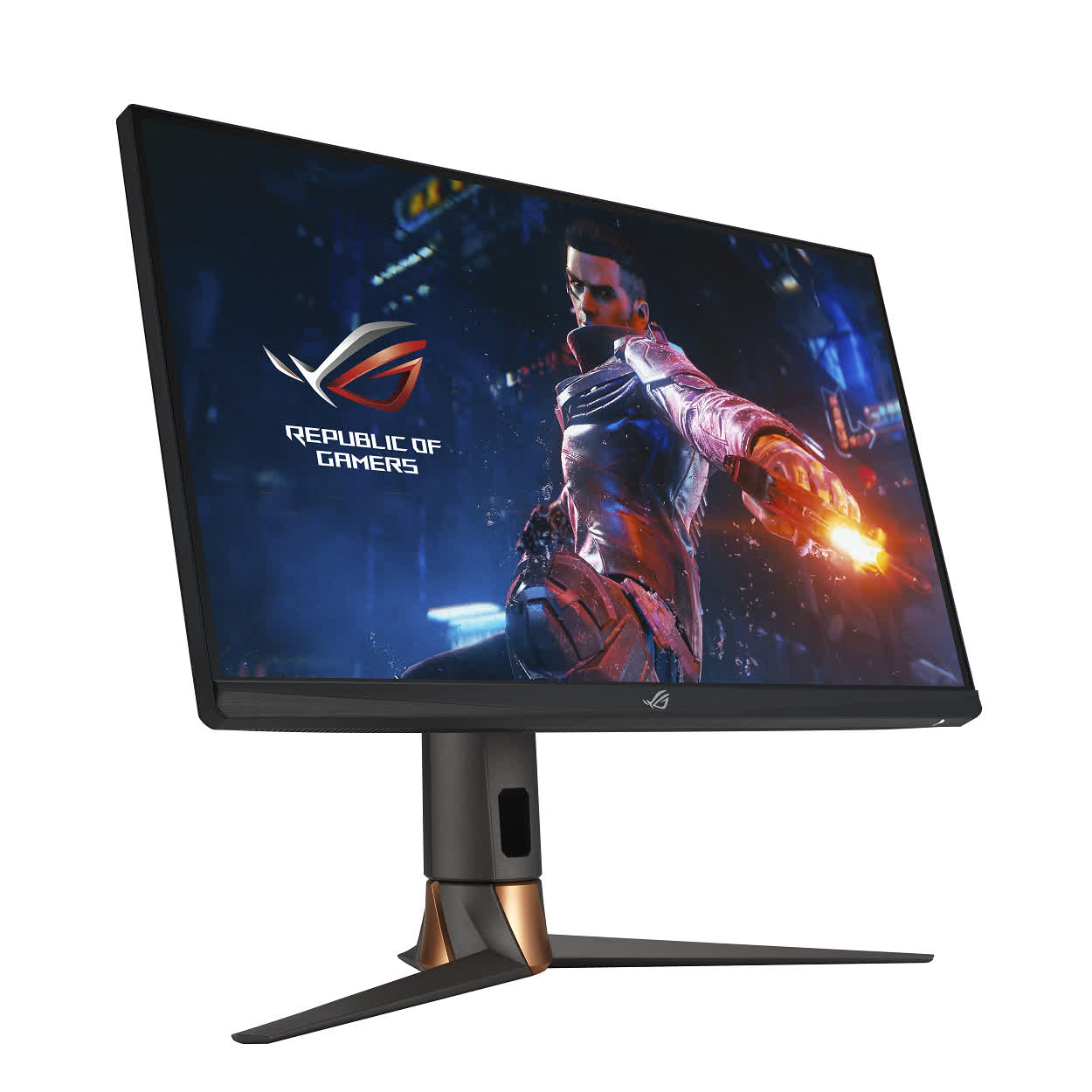
The PG279QM isn't as fast as the Odyssey G7 in terms of response times, but it's among the fastest IPS monitors we've tested with excellent motion clarity. Unfortunately, there is no backlight strobing support, however it balances this with outstanding color quality, probably the best mixture of features and performance I have ever seen.
This is an extremely wide gamut monitor, with 96% DCI-P3 coverage, 100% Adobe RGB coverage and over 80% Rec. 2020 in total, the widest you can get from an LCD gaming monitor today. But it also features an elite implementation of an sRGB mode, reducing oversaturation when viewing standard content completely, and helping to deliver well above average factory calibration, unmatched by its rivals. It also uses a flat panel with excellent viewing angles, making it well suited to creative and productivity work without distortion.
The PG279QM is hard to find, it's often out of stock although it is a relatively new product, and it is expensive: $850, which is $150 more than the same size Odyssey G7. It's a great monitor but it's one of those cases you have to pay for the best.
Another alternative that is more readily available is the Alienware AW2721D which uses an LG Nano IPS panel. It performs very well, certainly befitting of a high end product, but it is a step down from the Asus in most regards, whether we're talking response, color accuracy or wide gamut support; though it does have a better contrast ratio. The AW2721D isn't much cheaper in the US, usually going for $825, but in other regions like Australia, you can find it for ~$600, which is a more compelling offer.
Best Affordable 4K Monitor
LG 27UK650-W UHD 27"
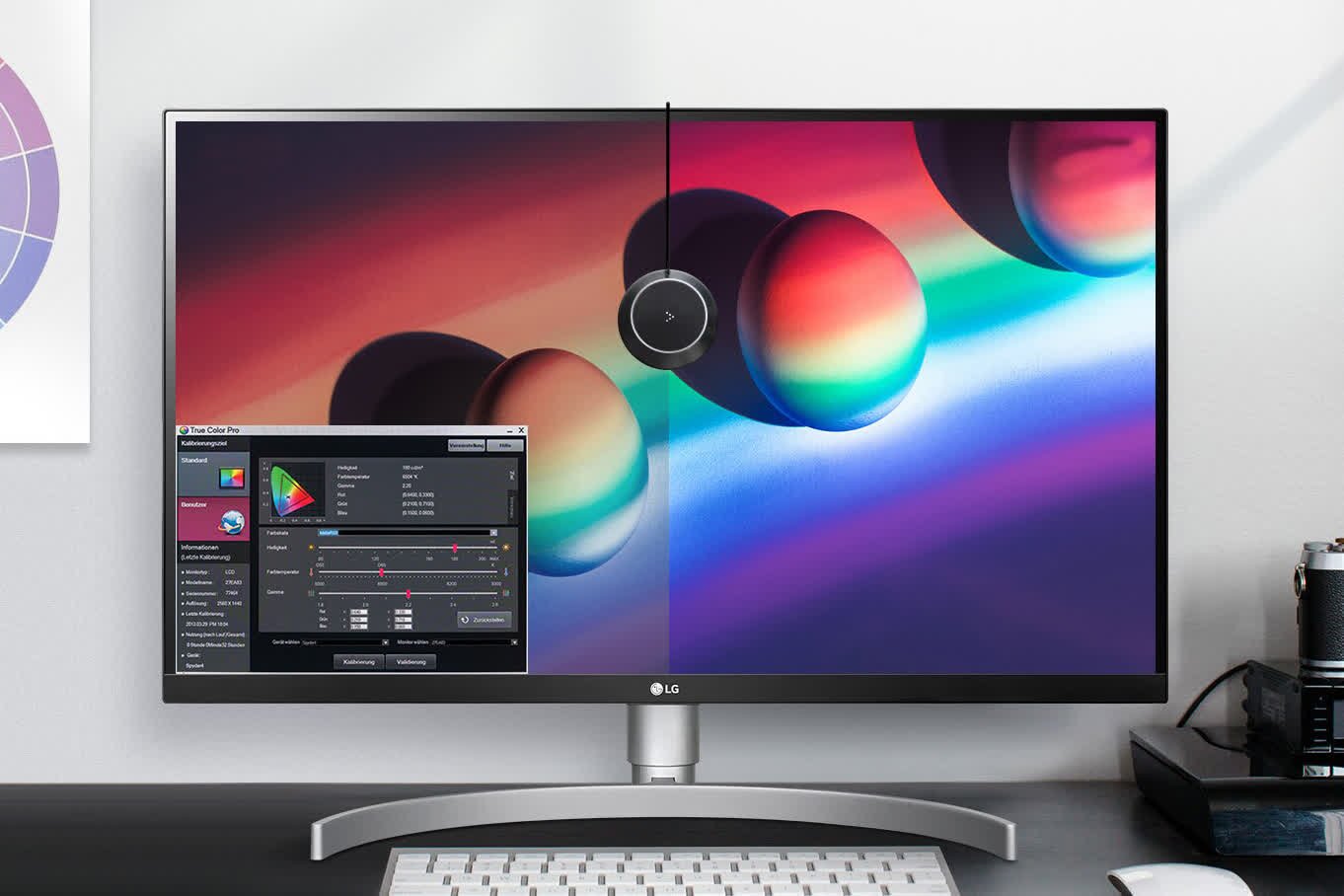
Great | Differentiating Features
Price, great viewing angles.
Good | Most Have It
Plenty of gaming features, FreeSync.
Average | Competitors May Be Better
Only 60Hz refresh, no VESA HDR certification.
Every year sees lower-end 4K monitors get even cheaper. At this point, consumers are spoilt for choice when it comes to choosing feature-packed UHD screens priced anywhere between $300 - $400, but we like LG's 27UK650-W.
This monitor is an excellent all-rounder for those wanting a budget 4K monitor for a variety of use cases: gaming, content consumption, creation, etc. The 27-inch IPS panel boasts 99 percent coverage of the sRGB color spectrum along with "HDR 10" support, though a peak brightness of 450 nits (350 nits typical) means its high dynamic range isn't as good as other true HDR monitors (it isn't VESA HDR certified) but that's not important to a lot of buyers.
While not advertised as an out-and-out gaming monitor, the LG 27UK650-W has several credentials in this area to make it a viable option. It comes with FreeSync, supports Nvidia's G-Sync, and has a 5ms GtG time. You also get additional features such as a black stabilizer, an upscaling function, Dynamic Action Sync for reducing input lag further, and presets for gaming genres such as FPS and RTS titles.
Those willing to spend an extra $200, the similar LG 27UK850 adds a USB Type-C port and VESA 400 certification. Wide viewing angles and a solid build round off the LG's 27UK650-W best elements, but the ~$300 - 350 price (depending on your choice of standard or adjustable stand) for such a great 4K all-rounder is its highlight.
Just as Good
The budget 4K monitor market has become a crowded one as mentioned earlier, with plenty of good options available to consumers. Another model we like is the ViewSonic VX3211-4K, which shares many similar specs and features as LG's 27UK650-W, but comes in a 32-inch size.
Dell's Ultrasharp U2718Q is certainly admired by reviewers and buyers as well, while those who prioritize gaming should check out the Asus MG28UQ.
Best Value Monitor
Acer XFA240 24"
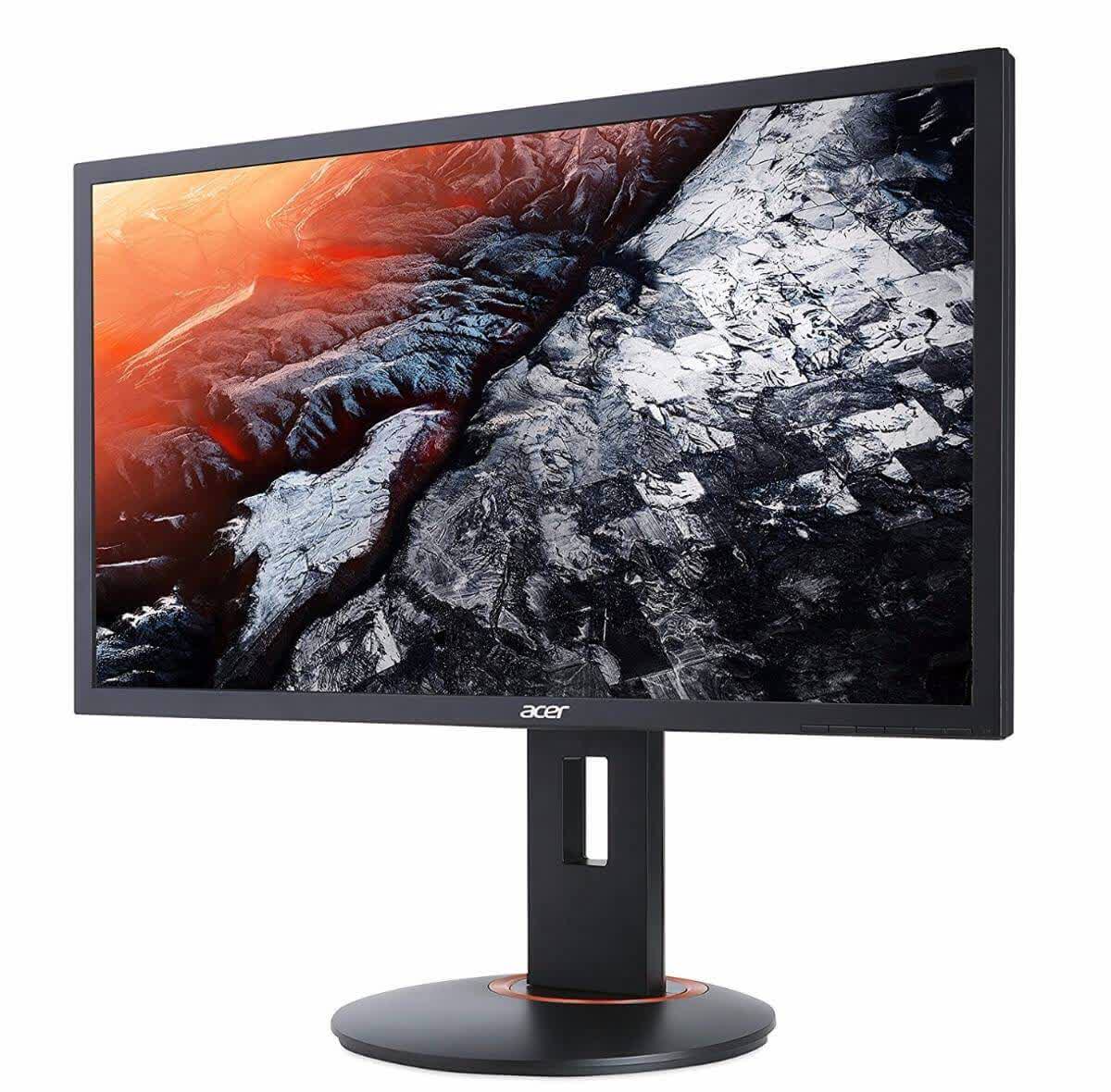
Great | Differentiating Features
Brilliant all-rounder for under $200.
Good | Most Have It
144Hz refresh rate, 1ms response time, FreeSync, G-Sync compatible.
Average | Competitors May Be Better
24 inches isn't big enough for everyone.
For about $200, there are plenty of options available under that price, but our favorite is the Acer XFA240. Acer's display offers an exceptional all-round package for $198. Measuring 24 inches and featuring a 1920 x 1080 resolution, the monitor boasts a 144Hz refresh rate, a 1ms response time, FreeSync, and G-Sync compatibility. The TN panel also features a 350-nit peak brightness, a 1,000:1 contrast ratio, and 8-bit color depth (6-bit + 2-bit FRC).
One might imagine Acer saved money by giving the XFA240 a sub-par build, but you'd be wrong. The construction is sturdy with ergonomic adjustments and you get two 2W built-in speakers, belying its budget nature -- you even get screws for the 100mm VESA mount.
Color accuracy isn't a weak point, either, as it's great straight out of the box and so is the contrast, while ports are made up of a DisplayPort 1.2, HDMI 1.4 with MHL, and Dual-Link DVI-D. Twenty-four inches might not be enough for some, but the Acer XFA240's spec sheet and features are amazing for a sub-$200 monitor. If you're on a budget and want a display for work and play, this is a great choice.
Just as Good
AOC C24G1 24" Curved
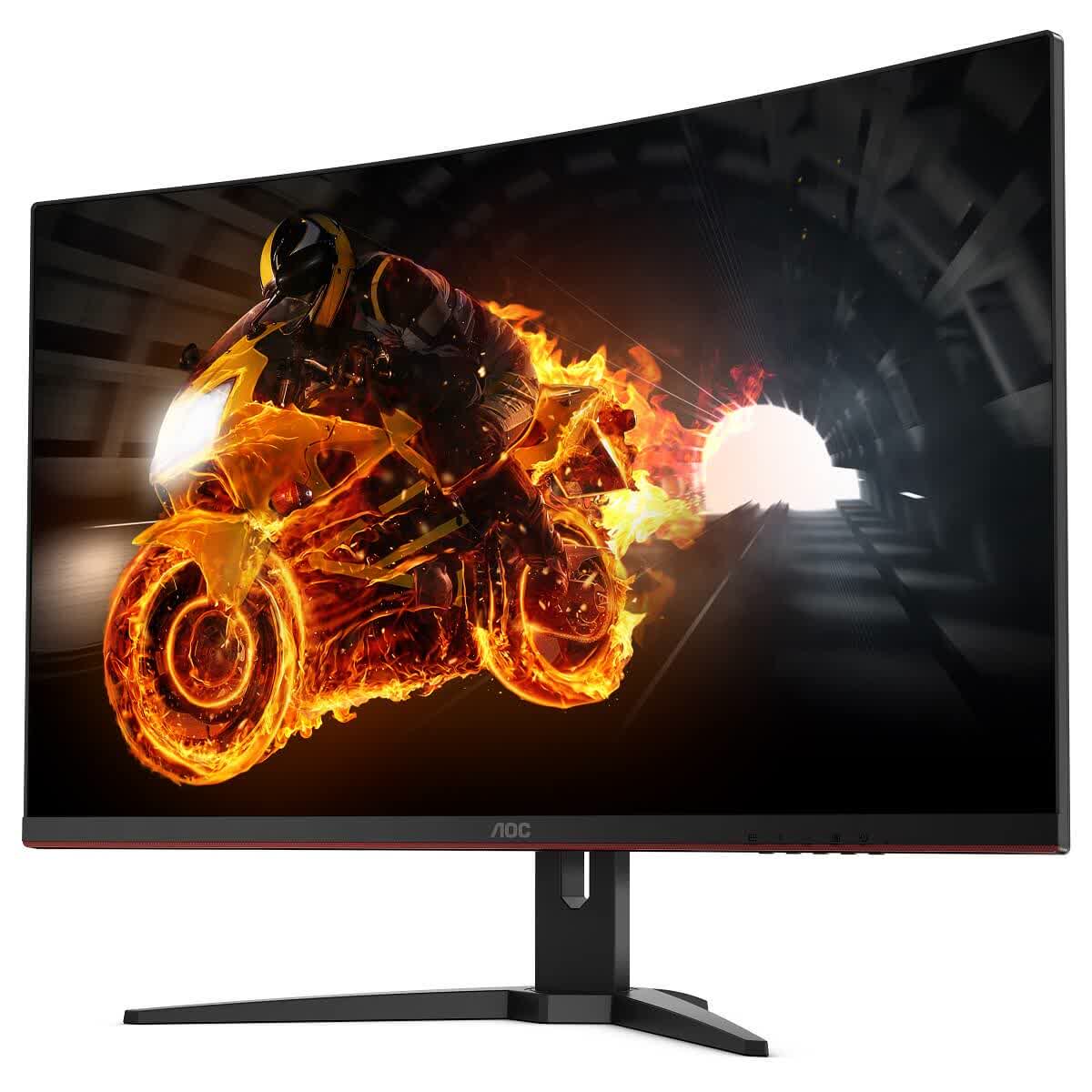
Last year's winner in this category remains a top option for those on a budget. Boasting a 1500R curve and a 1920 x 1080 resolution, it uses a VA rather than TN panel, bringing better color reproduction, contrast (3300:1), and viewing angles. Gamers not looking to spend a fortune will also appreciate the 4ms response time (1ms MPRT) and the inclusion of FreeSync. It's also G-Sync compatible. Connectivity comes via DisplayPort 1.2, two HDMI 1.4 ports, one VGA port, and a headphone jack. No USB ports or speakers, sadly.
Going to 27 Inches
Samsung 27" SF354
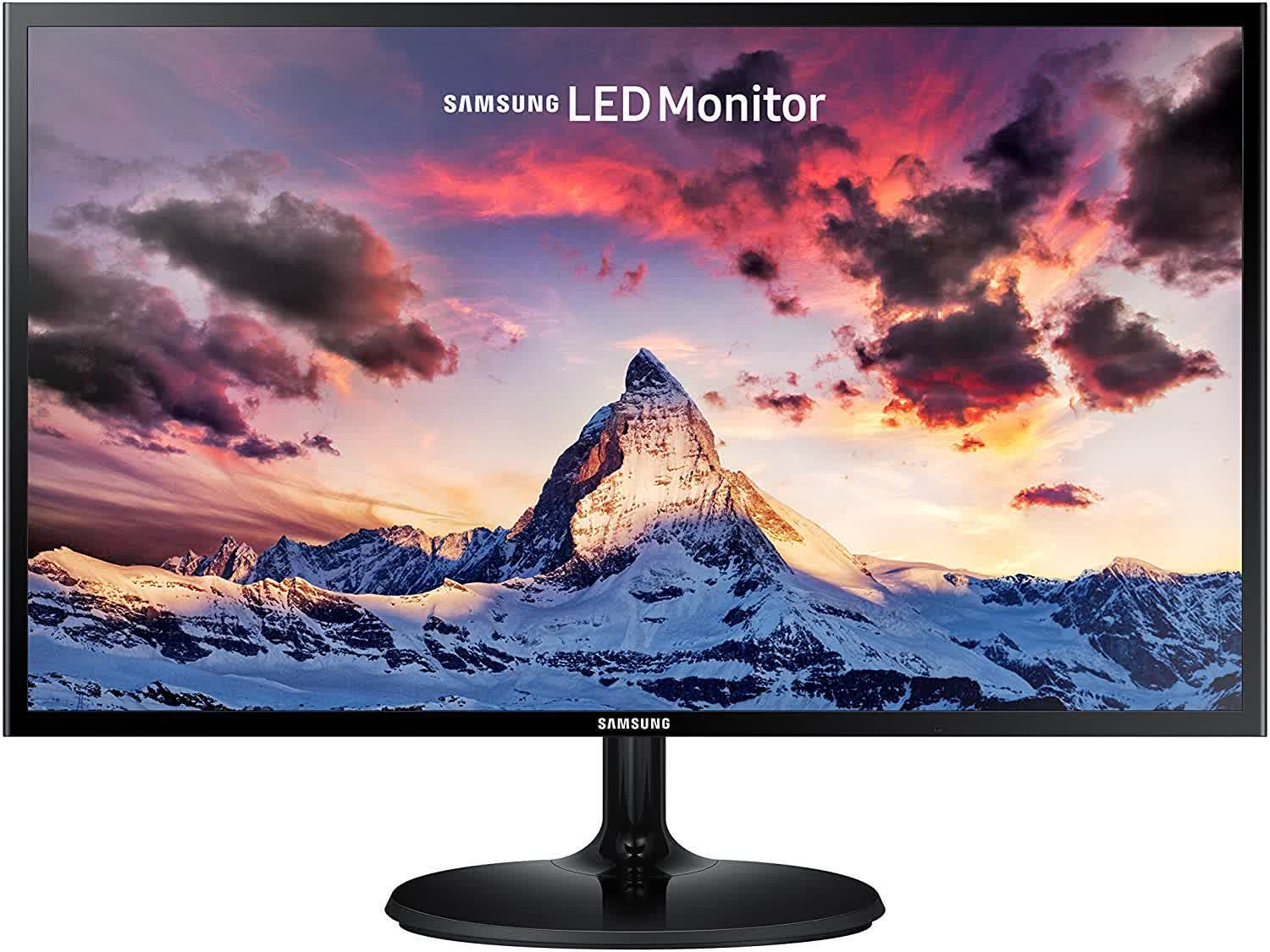
While there are plenty of 24-inch budget monitors available, choices are limited if you want to up the size to 27 inches. But if you simply must have those extra three inches, the Samsung 27" SF354 should top your list.
The larger real estate does mean a few compromises in other areas: the refresh rate is limited to 60Hz, it's only got one HDMI and one VGA port, and it's not going to win awards for color accuracy. But it does offer basic FreeSync and offers various modes. It also features a 1920 x 1080 PLS display panel, which is Samsung's version of IPS.
At ~$170 or less, it's great value for a monitor this size that's good for general work, office, and home use. If you want a cheap 27-inch screen that's more gaming-focused, check out the Asus VG275Q, that gets you a 75Hz refresh rate, built-in speakers, dual HDMI ports, and FreeSync for $30 more.
